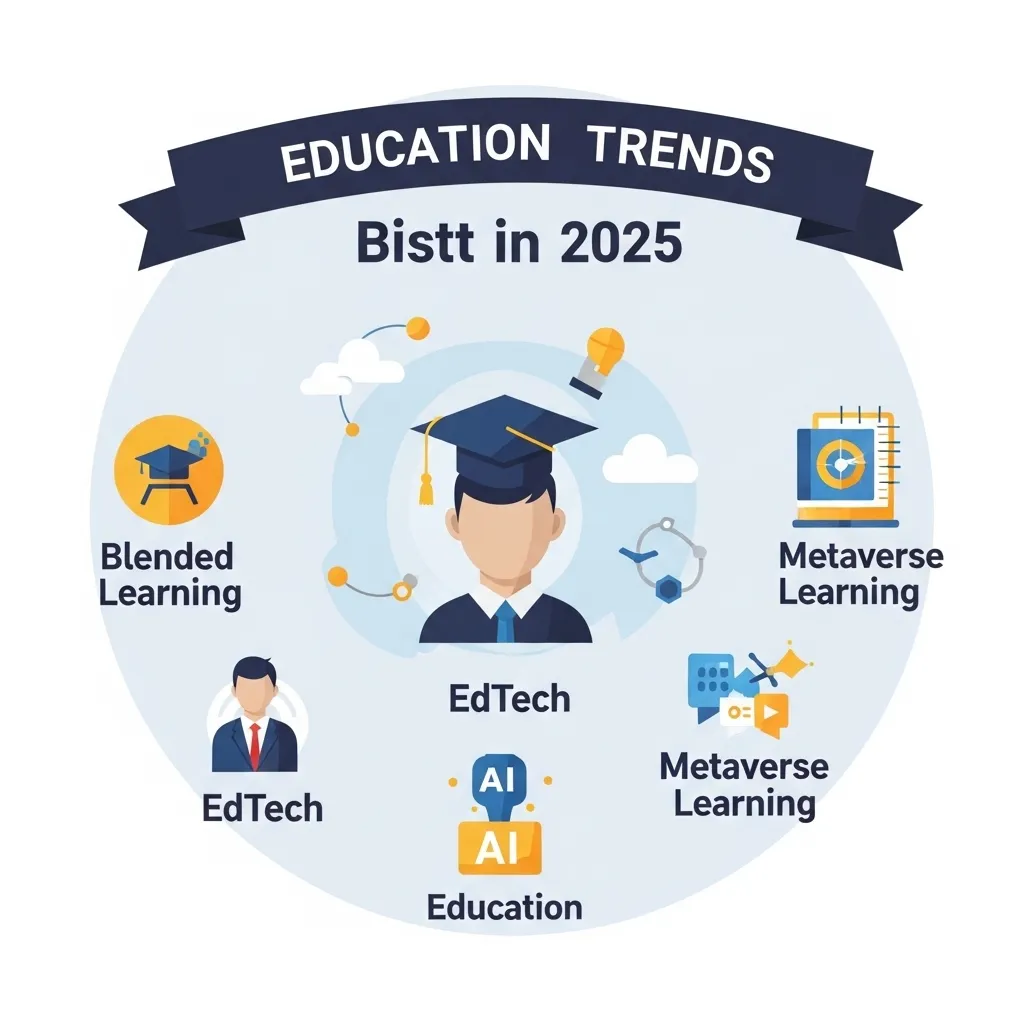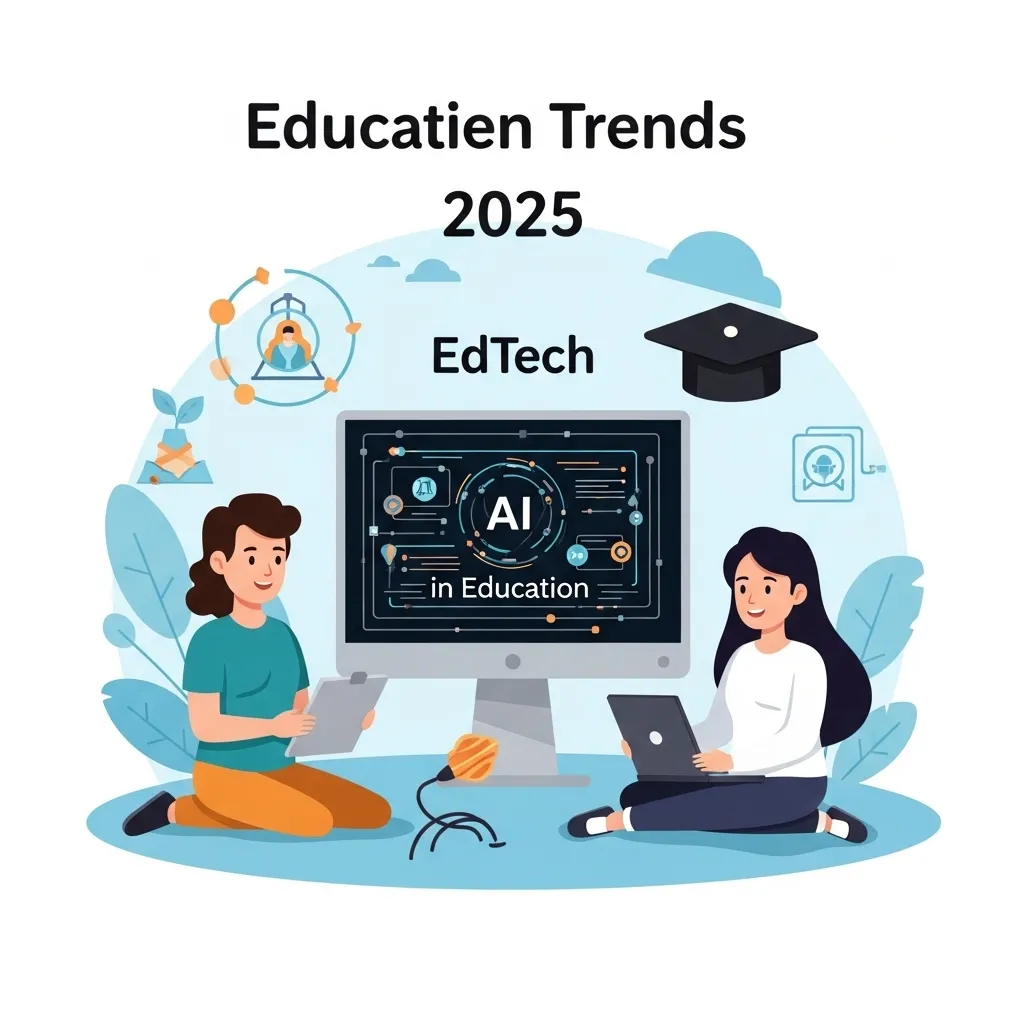Introduction: The Rise of Innovation in Education
One of the most significant education trends in 2025 we see is blended learning. Blended learning (sometimes called hybrid learning) is effective because it marries traditional learning in the classroom with digital learning tools like eLearning modules, apps, videos, online education platforms, and collaborative learning spaces. The majority [60%] of colleges and universities have reverted to hybrid or some form of blended learning (EdTech Magazine). Only 24% of colleges have gone back to fully in-person, which means blended formats will continue to be prevalent in engaging students in their study.
Blended learning allows learners to individualize their learning by interacting AI in education with digital content at their own pace, however they still have some form of mentorship with their instructor when they meet for face-to-face learning. The hybrid approach encourages inclusivity (all learners can be grouped together, regardless of pacing or learning modes) because students have variable pacing and may have specific modalities such as visual, auditory, or kinesthetic; but, every student can have a similar learning experience. Version learning gives a greater number of options/resources and includes tools like gamification, quizzes, and ebooks, which can provide increased levels of motivation & personalization of learning.
Blended Learning: A Key Trend in 2026
Blended learning continues to be one of the most salient education trends in 2026. Often described as hybrid learning, blended learning combines traditional classroom learning with digital tools (eLearning modules, apps, videos, and collaborative platforms) in the learning process. According to EdTech Magazine, only 24% of colleges have returned to full in-person classes and choosing to take a hybrid approach is a great way to stay engaged with digital format learning while simultaneously offering flexibility for students and institutions.
Blended learning enables students to take ownership of their learning as they engage with digital content at a comfortable pace yet also receive mentorship through face-to-face learning activities with instructors. A blended learning approach models inclusion for students by offering access to a variety of learning activities that stimulate opportunities for all students. Students with various modes of learning (visual, auditory, hands-on) can all benefit in equal amounts from the same course of study. Blended learning also makes use of online resources to assert student engagement, such as enhancing the experience with gamification, interactive quizzes, or ebooks. Blended learning also adds the element of motivation as a means of increasing ownership that creates a more successful, customized learning experience.
Also Read This: EdTech Magazine on blended learning
The Role of Technology in Driving Educational Innovation
Technology has always been an important force in the modernization of education, but in 2024 the affect is greater than ever. For example, artificial intelligence (AI) is currently not just a futuristic notion but can now be used in everyday classroom practice. Teachers, parents, and education institutions now have AI-powered platforms, which can correctly grade homework or generate and grade tests, and adapt to individual learning experience for each individual student based on every students strengths and weaknesses.

The Metaverse: an emerging trend of virtual reality, AI, and gamified learning into one interactive 3D collaborative space. The possibilities are endless for universities and training institutions to create dynamic and interactive virtual classrooms where students from anywhere in the world can join lectures, simulations, and group projects in real time. It is this type of immersion that is reshaping higher education as well as redefining remote learning paths.
Why Education Trends in 2025 Matter
As 206 nears, it is essential for educators, students, and parents to stay up to date with what is current in education. The EdTech market is forecasted to grow to $549.6 billion by 2033, up from $143 billion in 2023. Learning will have new possibilities and forms of availability, and students will have flexible, engaging, and upgraded ways to learn.
These trends aren’t only focused on EdTech, or technology in general—these trends are focused on a muse of a learner-centered ecosystem where students have options to gain control over how, when, and where they study. For institutions, this means being a part of scalable, innovative solutions that keep it relevant within the ever-changing world of education. For learners, it is an opportunity to navigate around geographical, affordability, and accessibility barriers that usually hinder quality education from reaching every edge of our world.




I like this weblog very much so much fantastic information.